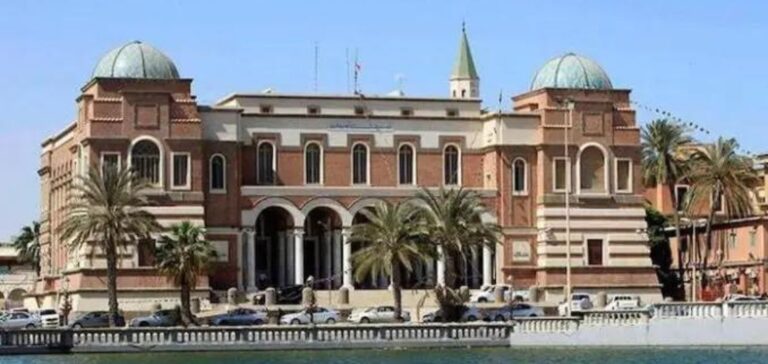The Central Bank of Libya, separated into two branches, announced its reunification on Sunday in this country plagued by divisions and security chaos for over a decade.
New Chapter for Libya’s Central Bank: Two Branches Reunited
The Central Bank of Libya (CBL) has “once again become a unified sovereign institution”, the governor and his deputy announced in a statement, saying they were “continuing efforts to overcome the consequences of the division” into two branches.
Al-Seddik al-Kebir, governor of the CBL (Central Bank of Libya), based in Tripoli (west), and Marii Moftah Rahil, governor of the rival branch based in the east. They made the announcement after an “extended meeting, attended by directors and consultants” from both branches. According to the press release. In the wake of this reunification, Mr Rahil became “deputy governor”.
Libya is the African country with the most abundant oil reserves. Hydrocarbon revenues are managed by Tripoli’s CBL. It decides on the allocation of funds to various state bodies, including the government. Two governments have been battling for power in Libya for the past year. That of the West, led by Abdelhamid Dbeibah, and that of the East, backed by the powerful Marshal Khalifa Haftar.
“This is an important step towards improving the performance of this sovereign institution,” Mr Dbeibah enthused on Facebook, reiterating his government’s commitment to “strengthening transparency and information procedures”.
Banking Reunification in Libya: Restoring Monetary Stability
A unification process had been launched in December 2021 within the central bank. Split since 2014, like many other state institutions due to power struggles between rival camps. The CBL in Tripoli was recognized by the international community. Like the Tripoli government, which is not recognized by the UN. Another branch was based in Bayda (east).
The existence of two competing branches has hampered the implementation of a single monetary policy. The Libyan dinar has fallen sharply since the 2011 revolt and the fall of Muammar Gaddafi’s regime. In July 2020, the UN had announced that it had finalized the process to launch an independent international audit of the two branches. It was seen as a major step towards reunification.






















